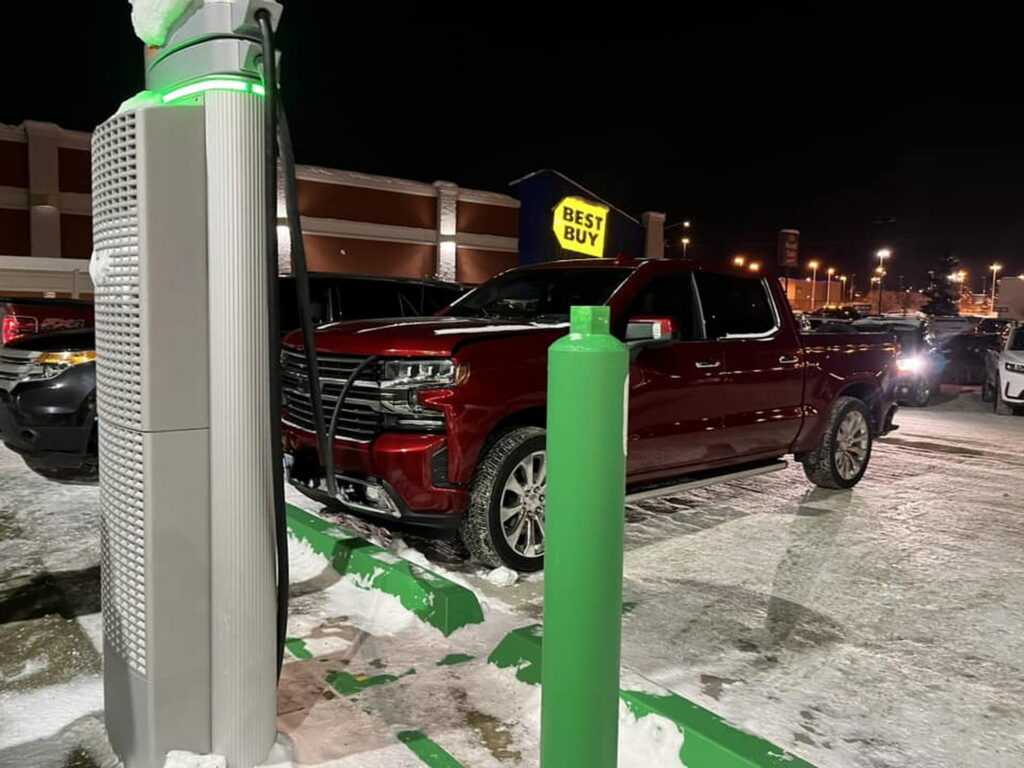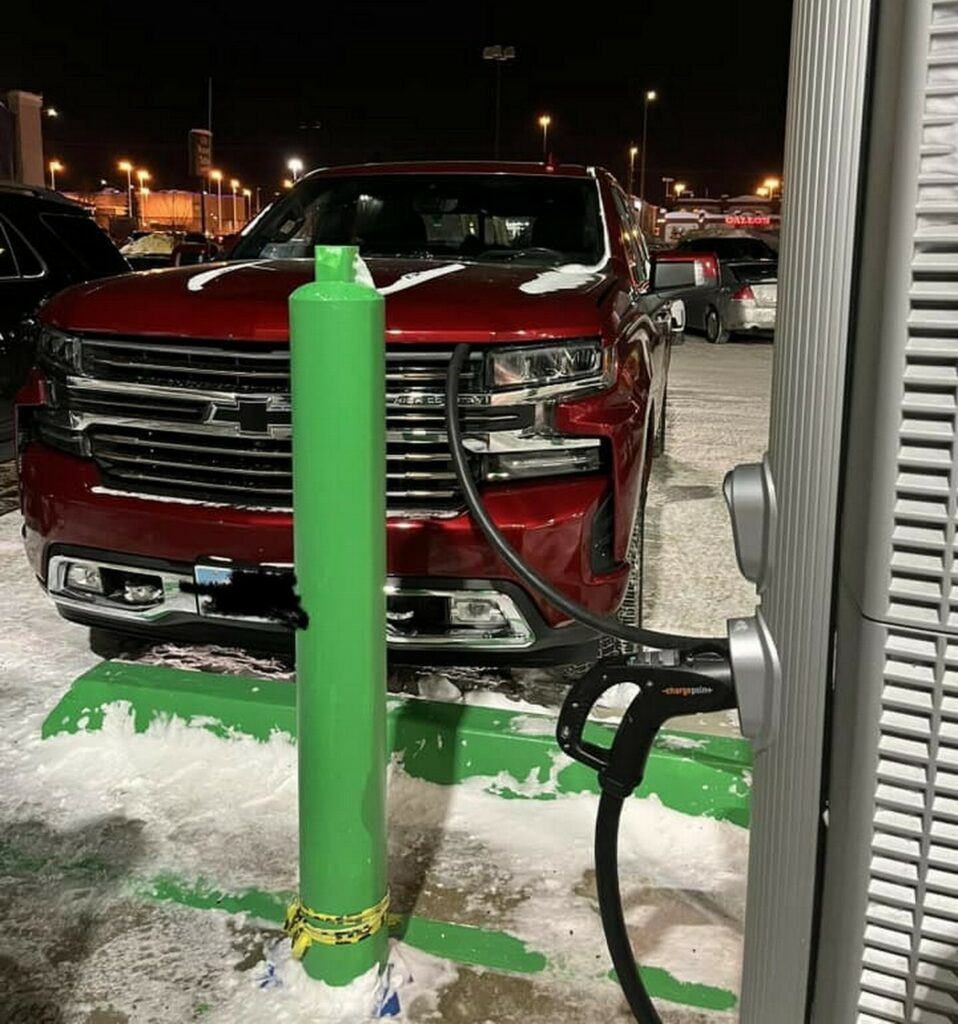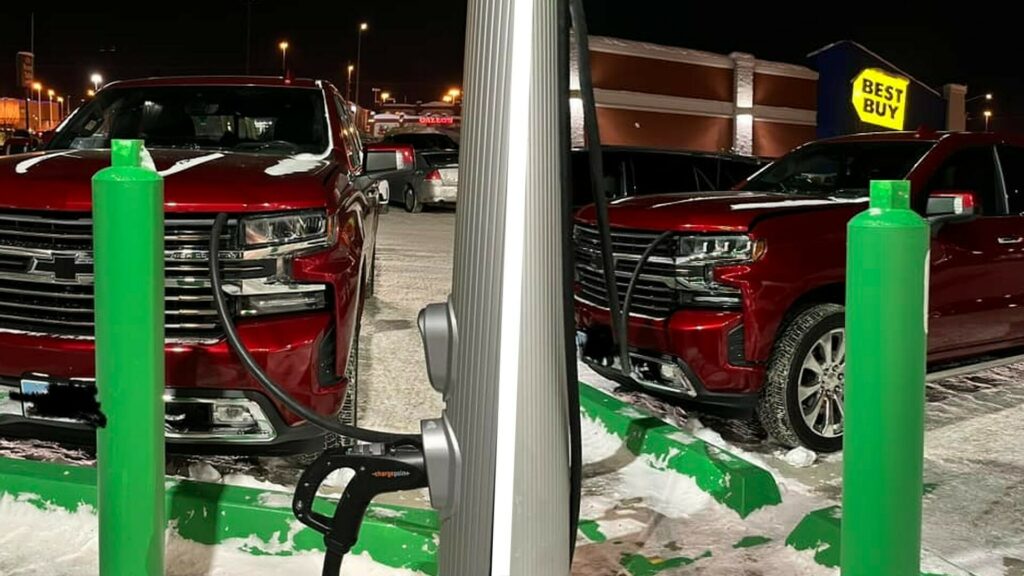Some people will do anything in order to find the most convenient parking spot, not caring about the consequences their actions may have on other road users. A typical example is an owner of a fourth-gen Chevrolet Silverado in Alaska, who occupied a dedicated EV parking spot, putting the charging cable under the truck’s bonnet for camouflage.
The photos were published on a Facebook Group called Alaska’s Worst Drivers by member Amanda Hanks. The cheeky Silverado was spotted pretending to be using a ChargePoint EV charger just outside the Dimond Center shopping mall in Anchorage. After parking in the clearly marked EV spot, the pickup driver popped up the truck’s hood and placed the charger on the absolutely non-electrified combustion engine.
Read: Most Americans Would Still Prefer An ICE Over An EV, Regardless Of Price

Deliveries of the Chevrolet Silverado EV are scheduled to start in late 2023, which means that all of the Silverado-branded models you see on the road have a combustion engine under the hood. Another point of differentiation is the exhaust pipes and the large grilles of the ICE-powered pickups compared to the sleeker and pipeless EV variants.
Still, even those who are not able to tell them apart know that sticking cables under the hood is not the proper way of charging an EV. A more plausible scenario for the tricky Silverado owner would be to place the charger under the fuel cap although it would be harder to stay there without a serious amount of tape.
As reported by Tire Meets Road, the parking fee for this specific spot for a plugged-in vehicle that is not charging is $18 an hour. Of course, there is no way for the Silverado to be plugged-in, which means that the owner got away with free parking for the evening thanks to this controversial stunt.
Alaska doesn’t have any laws for preventing ICE-powered vehicles from occupying EV charging spots, unlike many other states who have already taken action against this practice. This means that the Silverado driver won’t be facing any consequences for potentially blocking an unsuspecting EV owner from using the charger.





